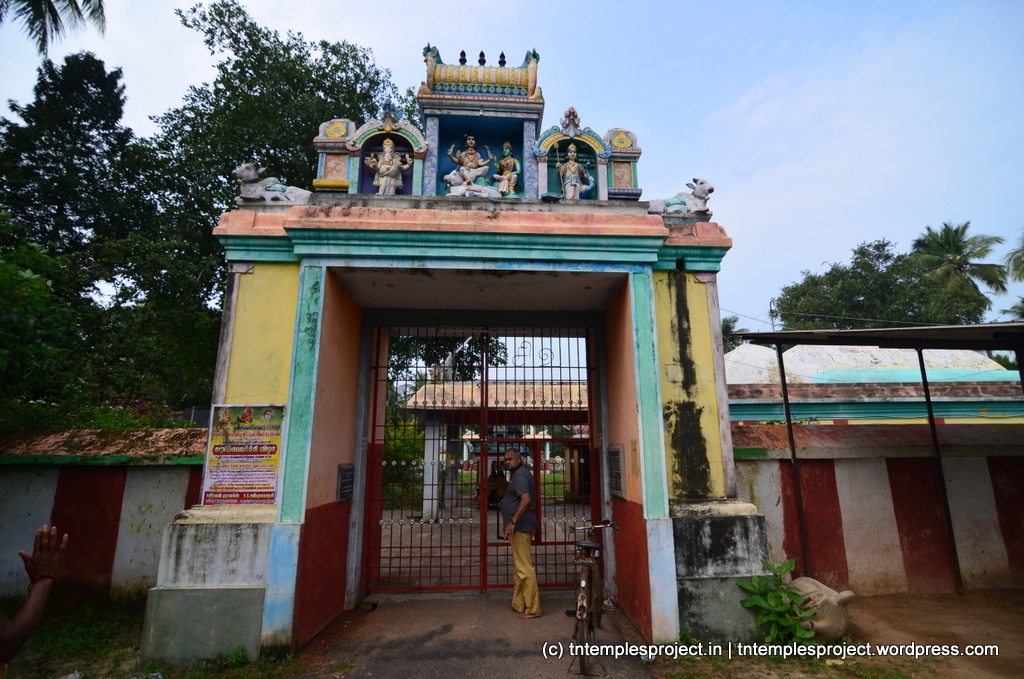Thiruthalaiyalangadu Sri Narthanapureeswarar Temple, Thiruvarur

Address
Thiruthalaiyalangadu Sri Narthanapureeswarar Temple, Sembangudi post, kudavasal, Thalayalagadu, Tiruvarur-612603 PH:9443500235
Diety
Aadavalleeswarar,Narthanapureeswarar Amman: Sri Balambikai
Introduction
The temple structure is considered to be more than 2700 years old and was initially renovated by Chola King Kulothunga the II. Later a number of rulers from the Chera, Chola, Pandiya, Chalukya and Pallava dynasties and other territorial Kings like Nalliyakodan, Sambhuvarayars, Athiaman, Kangeya Rayan, Bangala Rayan generously donated towards this temple.Thalayalangadu is situated at a distance of about 18 kms from Thiruvarur on the Kumbakonam to Thiruvarur route (Via Kudavasal). It is about 8 kms from Kudavasal.This is one of the 276 Devara Paadal Petra Shiva Sthalams and 93rd Shiva Sthalam on the Southern bank of the river Cauveri in Chozha Nadu (Thenkarai). Lord Shiva in this temple is a Swayambumurthi (self-manifested). This east facing temple has no main tower (Rajagopuram) but it has an arch at the entrance. The last consecration ceremony (Maha Kumbabishekam) took place on 08.07.2012. Theertham (Holy water): Sangu Theertham Sthala Vriksham (Sacred Tree): Jack fruit tree
Puranic Significance
During the Sangam era, this place was known as Thalaiyalankaanam. Thalaiyalankaanam was the battle field where Pandiya king Nedunchezhiyan won against the combined armies of Chera and Chola. After this, he assumed the title of “Thalaiyalankaanathu Seru Ventra Pandiyan” (“seru” means war and “ventra” means conquered in Tamil). One of the Sangam epics “Puranaanooru” describes this war in detail. To substantiate this story, there are a few places near this temple having names such as “Pandian Medu”, “Pandian Thidal” etc. There are certain stone inscriptions in this temple which date back to 12th century. This temple is under the administrative control of the Hindu Religious and Charitable Endowments Department of Government of Tamil Nadu (HR&CE). The legend of this temple involves some arrogant sages from a place called Dharukavanam. In their excessive vanity, they thought themselves to be superior than gods. To teach them a lesson, Lord Shiva asked Mahavishnu to take the form of “Mohini” (a beautiful angel) to divert the attention of the sages from their penance which they claimed was unparalleled. It is believed that the sages failed in their penance because they were attracted by Mohini. At the same time, Lord Shiva took the form of Pitchandavar and went to the sages’ house to ask for alms. It is believed that the wives of the sages were so enamoured by Pitchandavar that they started following him. This incident further shattered the sages’ claims that their wives were most pious and devout. When the sages realised that this was all a play by Lord Shiva, they decided to perform a Yagna (“Abhichara Velvi”) and used evil spirits and mantras to kill Lord Shiva. They created various weapons including an elephant, a tiger and a demon (Muyalakan) to kill him. Lord Shiva stopped all their weapons, vanquished the elephant and the man-eater and used its skin as his dress. The lord danced upon the body of the demon. Later on, the sages realised their mistake and surrendered to Lord Shiva for pardon. Lord Shiva is believed to have danced upon the body of demon Muyalakan in this place. Hence the lord here is praised as “Sri Narthanapureeswarar” (“Narthanam” means dance in Tamil). It is believed that Goddess Saraswathi worshiped Lord Shiva here. The lord gave her his darshan in the form of fire (“jyothir lingam”). It is believed that in the Kretha Yug, Sage Kapila worshiped Lord Shiva here and received the “Chintamani” gem. Saint Thirunavukkarasar (Appar) considered this place so sacred that he did not want to soil it by placing his feet there. It is believed that he travelled to this temple by standing upside down and walking with his hands. The lord gave his darshan to him under the “Sthala viruksham” (Jackfruit tree) on a new moon day in the Tamil month of Thai (Jan-Feb). Hence this place gets the name “Thalaiyalankadu” (“Thalai” means head in Tamil). It is believed that Saneeswarar, Kaali, Sage Kapila Muni and Saint Thirunavukkarasar have worshiped the lord here.
Beliefs
It is believed that those seeking “Santhana Prapthi” (child boon) can pray to the lord here. Devotees believe that by worshiping the lord here, they will be absolved from the sins that their forefathers or ancestors had accrued (“Pithru dosha”). Devotees believe that by taking a dip in this temple’s holy water, and worshiping the lord, they will be cured of all skin ailments including leprosy.
Special Features
Other than the shrines of Lord Shiva and Goddess Parvathy, shrines and idols of Vinayakar, Murugan, Natarajar, Dasapuja Kaali, Nalvar, Chandikeswarar, Chandikeswari, Bairavar, Kala Bairavar and Saneeswarar can be seen in the hall and the corridors. There is a separate shrine for Sri Kasi Viswanathar with Visalakshi in the corridor. In the “koshtam” (place surrounding the sanctum sanctorum), idols of Vinayakar, Dakshinamurthy and Durgai can be seen. Idols of Vinayakar and Saraswathi are at the first entrance and Polla Pillayar and Murugan are at the second entrance of the sanctum.
Festivals
Maha Shivrathri in February-March and Panguni Uthiram in March-April are grandly celebrated in the temple.
Century/Period/Age
1000-2000 years old
Managed By
Hindu Religious and Charitable Endowments (HRCE)
Nearest Bus Station
Thalayalagadu
Nearest Railway Station
Kumbakkonam
Nearest Airport
Trichy










